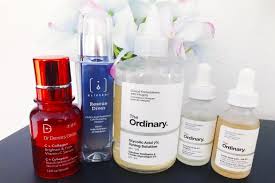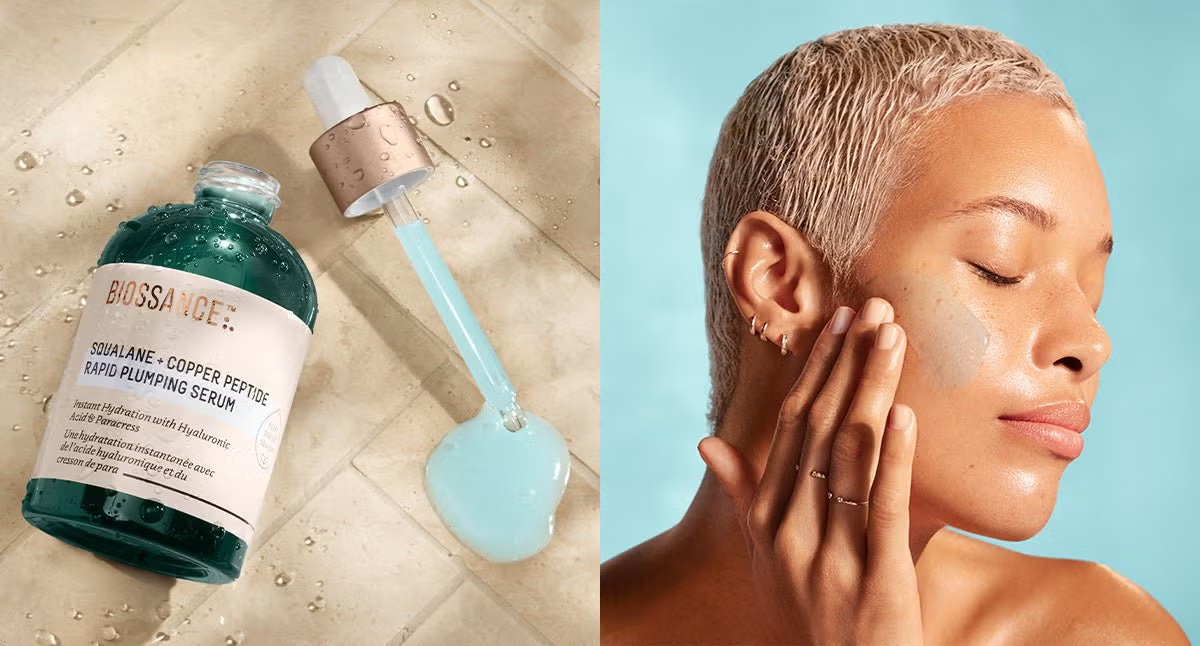How to Layer Hyaluronic Acid and BHA
I’ll be the first to admit that navigating your way around the beauty industry feels as though you have landed on an alien planet, with no means of deciphering what on earth everyone is talking about. This is by no means anything to be ashamed of as you’ll find that even those who have had a few lessons can still find it quite mind boggling at times.
This is exactly why today we plan to clear up and confusion surrounding how to layer hyaluronic acid and BHA. Don’t worry as I’m sure by the end of today’s blog post, next time you land on that skincare alien planet you’ll feel a lot more confident.
Can you use BHA and hyaluronic acid together?
You can indeed, and in all seriousness, I strongly suggest you always team BHA and hyaluronic acid together. Both ingredients contain many, varied skin benefits that when teamed will amaze you in the results you’ll see.
Hyaluronic Acid
Naturally occurring as a polysaccharide in the body, hyaluronic acid’s main role acts as a lubricate for joints, nerves, hair, and skin. It has the capability to hold almost 1,000 times its own weight in water ensuring it is one of the most effective hydrating skin ingredients. It can draw in water into the skin and lock it into the outer surface barrier, this not only keeps the complexion looking plumped, but also prevent any signs of damage caused by exposure to UV rays, pollution, and other environmental aggressors.
BHA
The term BHA stands for Beta Hydroxy Acid and is part of a large skincare family of chemical exfoliants, such as AHAs and PHAs. These potent skin favourites can slough away a build-up of dead skin cells, clear out the pores and reviving the skin (and that’s just a couple of their benefits!) The most known BHA is the blemish-busting salicylic acid. Unlike other AHAs salicylic acid is oil soluble meaning it can penetrate further into the skin, deep into the pores and removing any impurities, excess sebum, and bacteria. As effective as this ingredient is, however, it is known for causing some irritation to the skin so if you are prone to sensitivity, it is best to avoid using this ingredient.
When using hyaluronic acid and BHA together you will find that the hydrating properties of HA are able to counteract the drying effects of salicylic acid and other BHAs ensuring the skin remain comfortable without interfering with the rejuvenating benefits provided by the potent chemical exfoliants.
Can you layer salicylic acid and hyaluronic acid?
Absolutely, by layering salicylic acid and hyaluronic acid together you are allowing both ingredients to deliver the optimal skin results. For example, if you use an exfoliating toner containing the potent BHA before you are removing the physical barrier that sits on the surface of the skin. Once the dead skin cell build-up is removed any product application that follows will result in them reaching further down the lower layers of the dermis. This leads to you seeing results quickly. When you follow salicylic acid with hyaluronic acid as the hydrating agent will reduce the risk of any skin irritation that is a common side effect of the popular BHA, salicylic acid.
What order should you use hyaluronic acid?
If you have been knocking around these parts for a while, you’ll know that one of the most important skin rules is to apply your products depending on their consistency. Starting with the thinnest formula and working your way up to the thickest will ensure that all active ingredients blended into these formulas have the chance to absorb into the skin effectively, especially without having to combat physical barriers caused by products such as moisturisers, oils, and creams.
Do you use hyaluronic acid before or after salicylic acid?
This depends on which type of product you’ll find hyaluronic acid and salicylic acid. Generally speaking, you can normally expect to find the BHA to be formulated into exfoliating toners, serums, or light weight oils. As for hyaluronic acid the two main products found to contain this humectant the most frequently is serums and moisturisers. It doesn’t really matter when you apply both these ingredients, as long as you team them together, you’ll truly be amazed with the results they have on the skin.
Should I use moisturise after hyaluronic acid?
Quite often there is an idea that you achieve most of your hydration from your moisturiser, and although that is often the case, especially if the formula contains hydrating ingredients such as hyaluronic acid. The main task of a moisturiser however is to protect the protective skin barrier. It can do this with help of its rich consistency and blend of beneficial ingredients and when applied on top of all the previous steps in your routine will form a physical protective barrier on the outer surface of the skin. With the help from this barrier your skin will have a helping hand combating further damage as well as providing an extra source of hydration for any serum enriched with hyaluronic acid already applied to the skin.
What should we do after AHA BHA?
When dealing with AHAs and BHAs there are a few dos and don’ts that should be followed to ensure these ingredients work effectively.
Do – Apply a daily SPF in your morning routine
Even if you use your AHA or BHA in the evenings it is still vital to protect the new skin cells from any damaging exposure to UV rays. Applying a daily SPF of 30 and above will ensure the skin is fully protected and remains healthy.
Don’t- Use a physical scrub
This will be too abrasive for the skin and will not only cause excessive skin damage but prevent any other ingredients or products working effectively.
Do- Team your AHA and BHA with hyaluronic acid
Any sign of irritation or skin reaction will be combatted with ease thanks to the hydrating benefits of hyaluronic acid.
Don’t – Use a product containing AHA and BHA without a patch test
Applying a new product or ingredient to the skin without a patch test is a recipe for disaster. Always apply a 10 pence size amount of product to the inside of your forearm and wait for 24 hours. If there are no signs of irritation, you’re good to go!
And that is that for today’s blog post about how to layer hyaluronic acid and BHA, I hope I have answered your questions, but if there is anything else you wanted to know come and follow us on Instagram. Don’t forget, if its skincare you’re in to check out our new YouTube show The Green Sofa!
DQH Knowledge drop: In your 20s, your skin cell turnover decreases. (Cell turnover is a key component in keeping your skin youthful.) You know what else slows down? Your collagen production. Starting in your 20s, collagen decreases by about 1 percent per year. Should you want to prevent fine lines and wrinkles, start by eliminating behaviors that contribute to premature aging. “If it’s bad for you, it’s bad for your skin,” says dermatologist Michel Somenek.
“Cigarette smoking reduces blood flow to the skin and causes premature wrinkling and a dull skin texture. Making the repeated pursed motion to inhale can also cause smoker’s lines. Alcohol and recreational drugs are toxins for the skin that damage its cellular structure and DNA,” Somenek tells us. “The faster you eliminate vices while you are young, the better chance your skin and body have to recuperate.” Also, adopting an anti-aging routine in your 20s is key. After all, the best offense is a good defense. We spoke to Somenek and experts Joshua Ross and Audrey Kunin to find out more.
Keep reading for the best anti-aging products for your 20s, according to skincare professionals.
Sunscreen
“We all know that the sun is the number one cause of skin aging and starting the prevention in your 20s is very important,” Ross says. “The majority of your sun damage won’t start to appear until you’re in your 30s, so don’t wait until you see it surface or you’ll be behind the curve. Stay ahead of it with a good-quality zinc-based sunscreen worn daily.”
Farmacy Green Defense Daily Mineral Sunscreen
An invisible sunscreen with SPF 30, plus botanical extracts meant to protect skin with tons of antioxidants. Bonus: It’s clean and fine to use under makeup.
Bareminerals Complexion Rescue™ Tinted Moisturizer Broad Spectrum SPF 30
Although we recommend you use your SPF and moisturizer separately, we also understand moments when you don’t have time or energy for that extra step. For those times, this bareMinerals moisturizer is a great thing to have on hand.
Vitamin C Serum
“A great introduction to anti-aging is to start with a vitamin C serum in your morning skincare routine,” Ross says. “It’s a powerful antioxidant that will neutralize free radicals and brighten the skin.” He adds that it’s a great way to counteract the effects of the sun’s harmful rays, which, as previously mentioned, are among the biggest causes of premature aging.
Drunk Elephant C-Firma™ Vitamin C Day Serum
The Drunk Elephant C-Firma is a lightweight serum that promises to give skin a glow by combining the brightening powers of vitamin C with ferulic acid, l-ascorbic acid, and vitamin E. The included sodium hyaluronate is meant to replace hydration loss, so you shouldn’t have to deal with any irritation.
Sunday Riley C.E.O. Rapid Flash Brightening Serum
This potent serum is jam-packed with vitamin C (15 percent, to be exact), which means it’s a potential superstar at both brightening skin and dousing it in antioxidants.
Peptides
Using peptides on your skin has many benefits, says Somenek. “The skin barrier is what defends the body against pollution, UV rays, bacteria, and toxins. It can be damaged by several everyday factors. Using topical peptides aids in building a stronger barrier,” he says. “Peptides comprise elastic fibers, which are a type of protein. These fibers help to make skin appear taut and firm. Peptides can also help repair damaged skin, relieve inflammation, and even out skin tone. Some peptides can kill acne-causing bacteria that is common in 20-somethings.”
Kunin agrees, saying, “Peptides are an excellent entry point for supporting collagen.” She recommends looking for face and eye treatments that contain these collagen-boosting powerhouses.
Charlotte Tilbury Magic Eye Rescue Cream
This Charlotte Tilbury super-emollient eye cream has a base of coconut oil and shea butter (read: it’s incredibly hydrating). Botanicals plus peptides are meant to help reduce dark circles and boost collagen, respectively.
This creamy moisturizer serves up potent collagen-boosting peptides and pycnogenol, and antioxidant-rich vitamin C. “Instead of sitting on top of the skin, peptides penetrate the outer layer so they go deep. The ‘signals’ they send tell the cells to produce elastin and collagen, which are needed for youthful-looking skin,” explains Somenek.
At-Home Peel Pads
Remember that skin cell turnover fiasco we talked about earlier? One way to help support it is by exfoliating. “Exfoliation is important to help keep skin fresh and luminous,” Kunin says. She recommends using at-home peel pads as an easy and effective way to exfoliate.
“The goal in your 20s is to fight the slowing pace of cell turnover. It is wise to use products that gently exfoliate, yet still remove oil and other impurities. Products that have Alpha Hydroxy Acids (AHA) or Beta Hydroxy Acids (BHA) are a good choice.”
According to Somenek, you should only exfoliate two to three times a week. “People of all ages are guilty of over-exfoliating and that can be too much of a good thing,” he says.
Dermadoctor Kakadu C Intensive Vitamin C Peel Pad
A few swipes of this Derma Doctor powerful peel pad promise to leave your skin glowing and smooth, thanks to the seven (yes, seven) types of chemical exfoliants, including AHA and BHA. It also contains vitamin C via Kakadu plum extract for added brightening and antioxidant protection.
KEY INGREDIENTS Kakadu plum extract is sourced from the Kakadu plum, a fruit grown in northern Australia. It contains vitamin C, which restores the skin’s natural barrier, increases collagen production, and soothes irritation.
Dr. Dennis Gross Skincare Alpha Beta® Universal Daily Peel Pads
These are the gold standard of peel pads, with a cult following and over 900 five-star reviews on Sephora. They’re easy to use and contain a blend of anti-aging exfoliating acids.
Emollient Night Cream
“In your 20s, you need to start upping the hydration in your skincare routine. You may have been cautious of over-moisturizing because of acne in your teens, but as you enter your 20s, your skin transitions and becomes drier,” Ross says. “I recommend an emollient night cream added into your evening skincare regimen.”
“Twenty-somethings need to make sure that they are not using creams that will clog their pores and cause excess oil production,” says Somenek. Opt for non-comedogenic products.
Cerave Skin Renewing Night Cream
One great choice is the CeraVe Skin Renewing Night Cream, which is a non-comedogenic night cream that leaves skin soft and glowy. It combines the moisturizing powers of ceramides and hyaluronic acid.
RoC Retinol Correxion Max Hydration Creme
“The best night cream ingredients contain retinol, benzoyl peroxide, and/or salicylic acid or hyaluronic acid. The goal is to moisturize, yet remove excess oil,” says Somenek. This Roc Retinol Correxion cream fits the bill as it contains both hyaluronic acid and retinol so it promises to moisturize while also being non-comedogenic.



